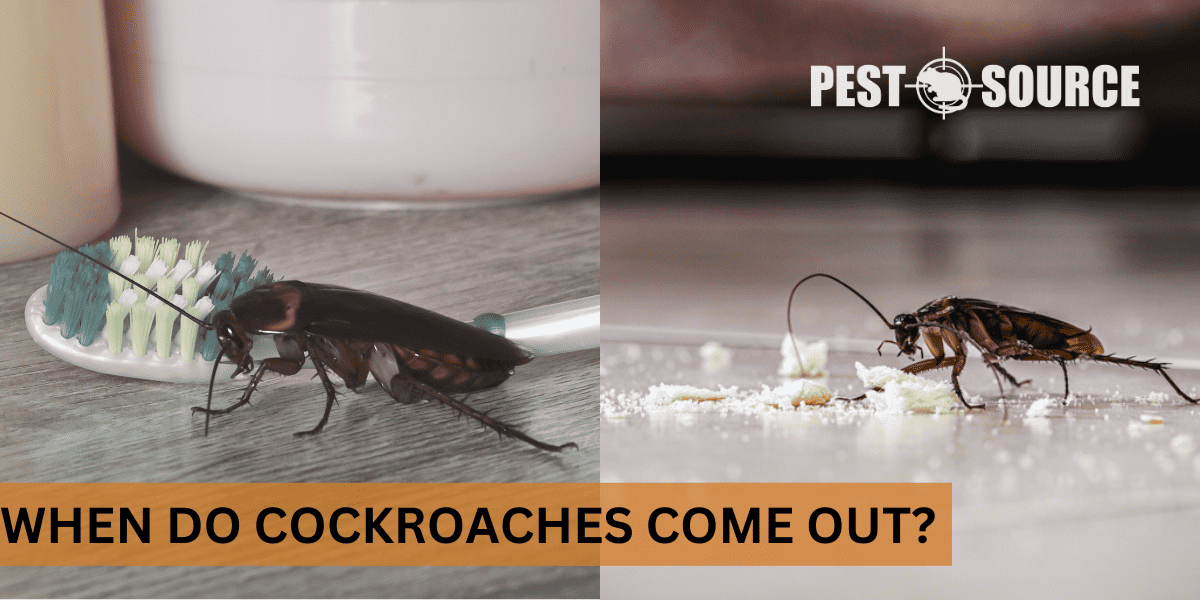Cockroaches are primarily nocturnal and come out at night to forage for food and water. This article explains their nocturnal behavior and what it means for controlling infestations effectively.
POINTS
- Cockroaches are primarily nocturnal and prefer dark, warm, and moist areas to hide during the day, becoming more active at night in search of food and water.
- The peak activity for cockroaches typically occurs in the warmer months, late spring through summer, due to ideal breeding conditions provided by higher temperatures and humidity levels.
- Cockroaches exhibit group behavior and communicate through pheromones, which can lead to increased sightings as they collectively respond to signals indicating food or danger.
- Environmental factors like temperature and humidity trigger cockroach activity, while human presence and activities, particularly related to food and waste, attract them.
- Cockroaches have adapted to urban environments, exploiting resources and habitats provided by human habitation, with regional variations affecting their activity patterns.
Daily and Seasonal Activity Patterns of Cockroaches
Daily Cycle: Hiding Spots and Active Periods
Cockroaches are primarily nocturnal creatures that prefer to stay hidden during the day. They seek out dark, warm, and moist areas to rest and hide from potential threats. Common daytime hiding spots include cracks and crevices, behind refrigerators, under sinks, and within piles of clutter.
As night falls, cockroaches become more active as they emerge from their hiding places in search of food and water. This nightly activity is heavily influenced by the absence of light, as cockroaches are known to avoid illuminated areas. The cover of darkness provides them with a sense of security to explore and forage.
Seasonal Aspect: Roach Season and Peak Emergence
Cockroaches thrive in warm environments, which is why roach season typically coincides with the warmer months of the year. During this time, you may notice an increase in cockroach activity. The peak times for cockroach emergence are usually in the late spring through summer, as the higher temperatures and humidity levels provide ideal conditions for them to breed and seek out resources.
However, it’s important to note that while cockroaches are more visible during these warmer seasons, they can be active year-round, especially in human-inhabited environments where warmth and food are consistently available.
Group Behavior and Communication in Cockroaches
Do Cockroaches Live or Travel in Groups?
Cockroaches are known to exhibit group behavior, often seen when they infest an area. They may travel in groups, especially when a large food source is discovered. This behavior is part of their survival strategy, as moving in groups increases their chances of locating food and evading predators.
Communication Among Cockroaches
Cockroaches communicate through various means, including the release of pheromones. These chemical signals can indicate the presence of food, alert others to danger, or even attract mates. This form of communication is crucial for their survival and plays a significant role in their daily and seasonal activity patterns. When one cockroach finds a food source, its pheromones can lead others to the same spot, which is why you may suddenly see multiple cockroaches emerge in an area where only one was spotted before.
Environmental and Human Influences on Cockroach Emergence
Understanding what triggers cockroaches to come out is key to controlling and preventing infestations. Let’s explore the environmental factors, such as temperature and humidity, as well as the impact of human presence and activity on cockroach emergence.
Triggers for Cockroach Activity
Environmental Factors
Cockroaches are highly influenced by their environment. They prefer warm temperatures and high humidity, which are conducive to their survival and reproduction. Sudden changes in the environment, like an increase in temperature or moisture, can trigger cockroaches to emerge from their hiding places as they seek out more comfortable conditions or new sources of food and water.
Human Presence and Activity
Human environments provide a buffet of resources for cockroaches, including food scraps, water leaks, and refuge in the form of clutter and garbage. Our daily activities, especially those related to food preparation and disposal, can inadvertently attract cockroaches. Even at night, when human activity typically decreases, cockroaches may come out to take advantage of the leftovers of the day.
Regional Variations in Cockroach Emergence
Cockroach activity can vary significantly based on regional conditions. Urban areas, with their higher density of buildings and waste, can offer more opportunities for cockroaches to thrive. Conversely, rural areas may experience less cockroach activity due to fewer resources and habitats suitable for these pests.
Geographic location also plays a role. In warmer climates, cockroaches can be active year-round, while in cooler regions, they may seek indoor warmth during colder months, leading to increased sightings in homes and businesses.
Human Environments and Urban Adaptations
Cockroaches have shown remarkable adaptability to urban environments. They have evolved to exploit the resources provided by human habitation. In cities, cockroaches can find ample food, water, and warmth, allowing them to remain active and reproduce throughout the year.
Our buildings provide cockroaches with numerous entry points and hiding spots. Gaps in walls, crevices around pipes, and even spaces beneath doors can serve as gateways for these pests. Once inside, they can easily navigate through wall voids and ductwork, spreading to different areas of a structure.



